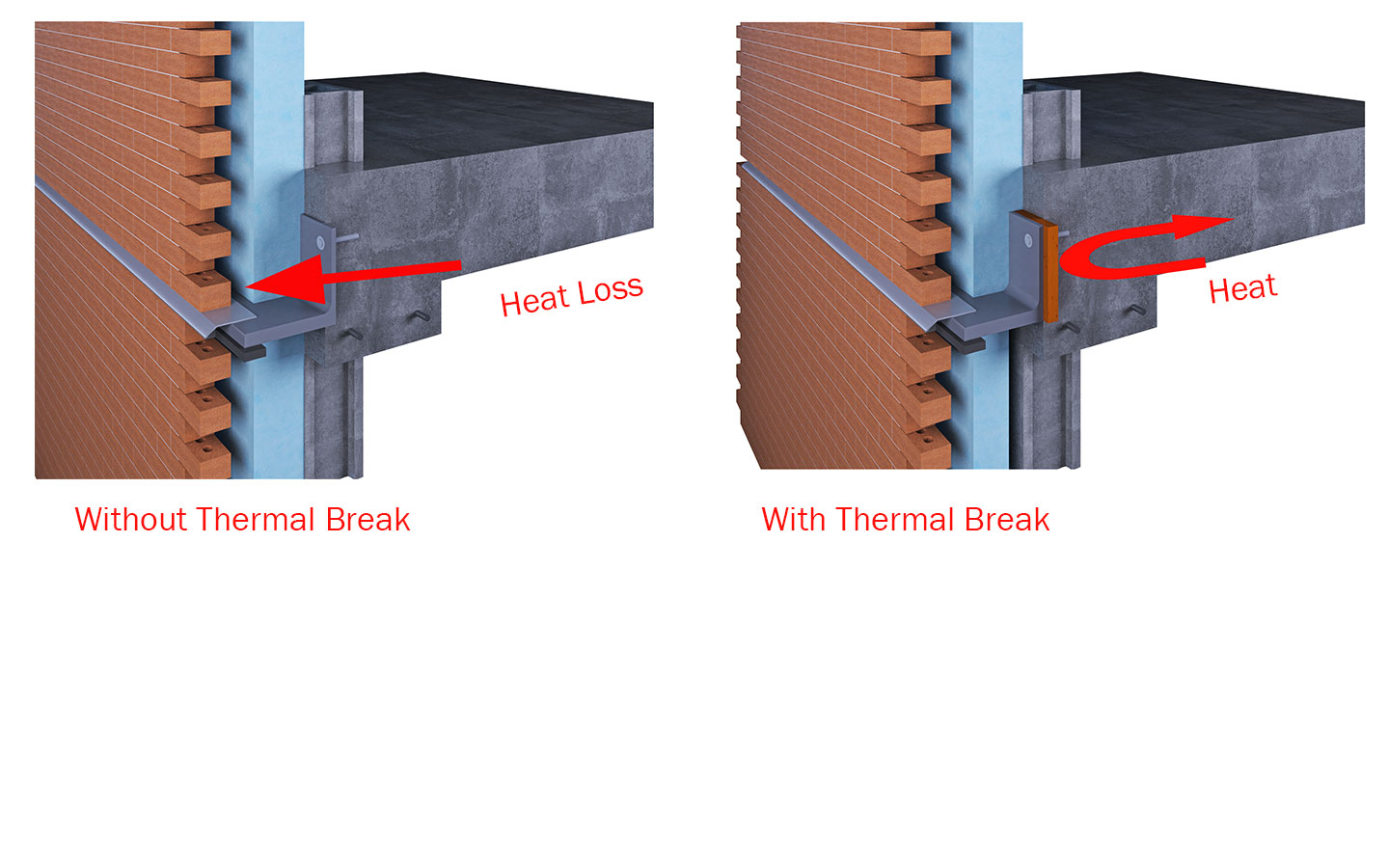Purpose

The purpose of thermal break materials and systems (thermal breaks) is to reduce the impact of thermal bridging by reducing conductive heat flow through the thermal envelope. Thermal breaks keep the heat in and push the dew point out. They break the bridge.
Some research has shown that thermal bridges can increase the whole-building conductive heat loss by more than 15%. The percentage is a function of some obvious variables: climate, building type and the location and type of the thermal bridges. The magnitude of the thermal bridging is a large factor. Some interface details increase the U value of a wall by 45%, other transition details increase the U value by only 5%. Is the building enclosure 40% curtain wall? Is there one canopy or are there fifty balconies?
The heat flow (loss) created by thermal bridges varies by the detail and the number of details. If the building design contains lots of poor or inefficient details, the contribution to overall heat loss through the envelope will be high. To improve the energy efficiency of a building, we need to improve the efficiency of the thermal envelope.
If you are designing to Passive House standards, thermal bridges are simply not allowed and air leakage is restricted. This significantly reduces heat loss, which in turn reduces energy consumption. Designing to LEED standards also involves reducing a building’s energy footprint and EA credits are given for optimizing building energy performance, which includes optimizing the efficiency of the thermal envelope.
So thermal bridges have an impact on the thermal envelope, whose performance contributes to the overall building energy costs. How do we reduce the heat loss due to thermal bridging? By using thermal breaks. Thermal breaks create continuity within the thermal control layer which results in true continuous insulation…..


